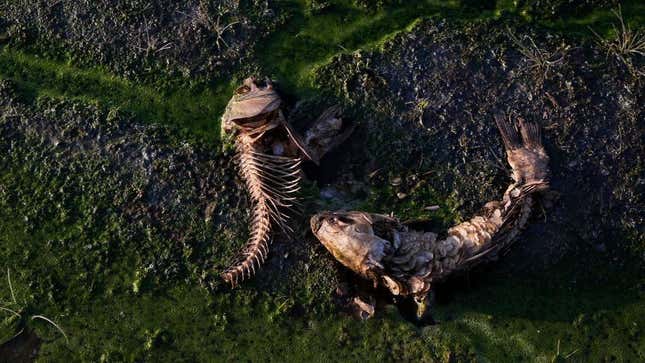
Chile’s freshwater sources—and the people who depend on them—are in trouble.
Thirteen years of drought have depleted water levels in the Peñuelas reservoir in central Chile so badly that the skeletons of fish that once swam there now litter the dry ground. According to Reuters, there used to be enough water in the reservoir to fill more than 30,000 Olympic-size swimming pools, and now there’s only enough for two pools. Laguna de Aculeo, which used to be a popular swimming and kayaking site, is now a dry patch of land.
As areas with higher elevation start to see higher temperatures, there’s less snowpack across the Andes Mountains that go through several South American countries, including Chile. The abundance of snow used to melt down into reservoirs and rivers, but there’s been little precipitation in the country for years, and there seems to be no end to the ongoing dry period. According to University of Chile researchers, the country will see 30% less water in the next three decades, Reuters reported. So what is now severe drought could easily become Chile’s new normal.
There have been signs of this looming water crisis for some time, and in April, the city of Santiago unveiled a four-tier plan addressing different levels of water conservation that applied to more than a million people. The system monitored water levels of the Maipo and Mapocho rivers that supply most of Santiago’s water.
The first level is a “green alert” that prioritized using groundwater. The next two levels are an “early prevention warning” and “yellow” stages. The following stage is a “red alert” that means water rationing through 24-hour rotating water cuts. Chilean officials said that the system was introduced to ensure that all residents could have access to water.
Ability to get sufficient drinking water is becoming a dire concern for Chile. More than half of the country’s 19 million people now live in an area that is experiencing some form of water scarcity, the Guardian reported earlier this month. Vulnerable rural communities must now have water delivered to them.
Major cities around the world are grappling with low water levels. Water reservoirs in California are reaching all-time lows, affecting the state’s capacity to produce hydropower. People in Austin, Texas have been asked to reduce water usage, with $500 fines for violations.